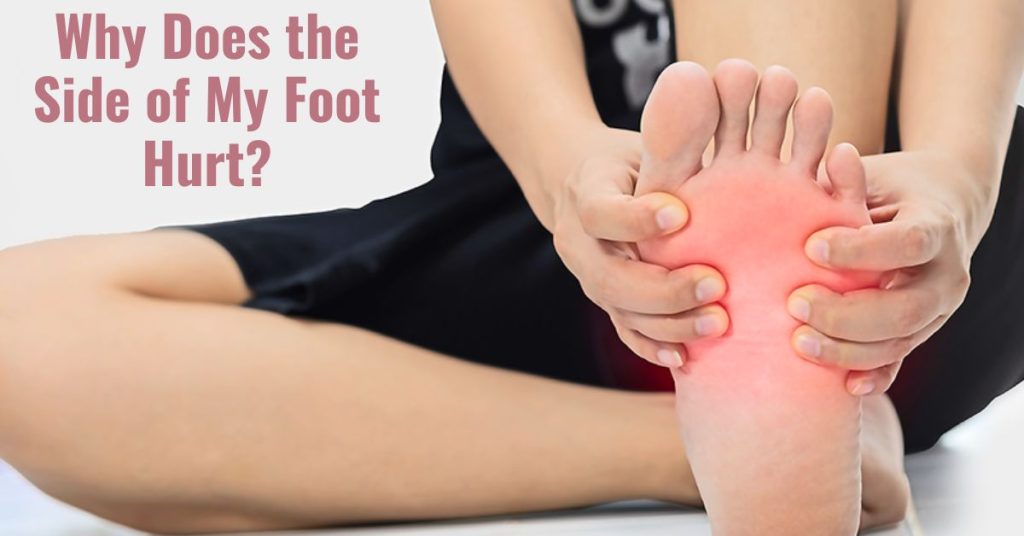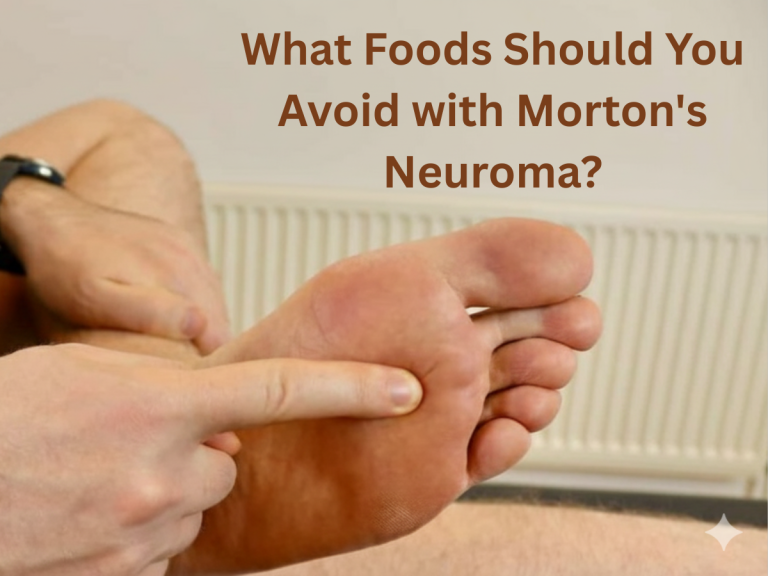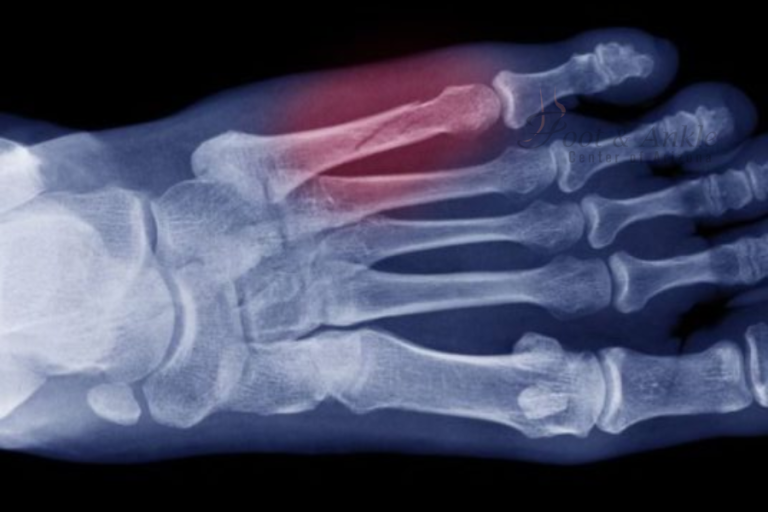Experiencing pain in the facet of your foot may be frustrating and debilitating. This pain can stand up from numerous underlying issues, and expertise in the root reason is important for effective remedy. In this newsletter, we can explore 8 capacity motives for lateral foot pain, providing perception into why the facet of your foot would possibly harm and supplying practical recommendations for remedy and prevention.
1. Peroneal Tendonitis
Among the most common causes of pain in the lateral region of the foot is peroneal tendonitis. This is simply an inflammation of the peroneal tendons, which course down the lateral aspect of the ankle and the foot. More often than not, this kind of condition happens in athletes, particularly runners.
Symptoms:
- Soreness and swelling on the foot’s outer surface.
- Pain that becomes better when you rest and gets worse when you move.
- An ankle sense of unsteadiness.
Treatment:
- Take it easy and stay away from things that make you hurt worse.
- Use ice to minimize edema.
- Apply a compression bandage to the tendons for support.
- For activities to strengthen the peroneal tendons, speak with a physical therapist.
2. Stress Fractures
Tiny breaks in the bone caused by repeated strain, usually from overuse, are known as stress fractures. These fractures typically affect the metatarsals, and the long bones in the foot, and can cause severe discomfort in the foot’s metatarsal area.
Symptoms:
- Pain that gradually starts to get worse when playing weight-bearing sports.
- Bruises and swelling at the foot’s metatarsal.
- Sensitivity to the touch.
Treatment:
- Rest and avoid placing weight on the affected foot.
- Use crutches or a on foot boot to immobilize the foot.
- Apply ice to lessen swelling and pain.
- Seek medical interest for correct diagnosis and control.
3. Cuboid Syndrome
One of the seven tarsal bones in the foot, the cuboid bone, can become misaligned or subluxated, resulting in cuboid syndrome. Repetitive strain or an ankle sprain may cause this.
Symptoms:
- Sharp ache on the lateral side of the foot.
- Difficulty taking walks or bearing weight.
- Swelling and redness within the affected location.
Treatment:
- Manipulation by means of a healthcare professional to realign the cuboid bone.
- Rest and elevation to reduce swelling.
- Application of ice to relieve pain.
- Use of orthotic gadgets to guide the foot.
4. Bunions
Although bunions are usually shaped on the internal aspect of the foot, intense instances can motivate pain on the outer facet as nicely. This is because of the altered foot mechanics and strain distribution.
Symptoms:
- An important bump at the side of the large toe joint.
- Pain and swelling around the bunion.
- Difficulty wearing footwear.
Treatment:
- Wear huge-toed shoes to reduce stress at the bunion.
- Use padding or orthotics to relieve pain.
- Apply ice to reduce infection.
- Consider surgical alternatives for excessive cases.
5. Tarsal Coalition
Tarsal coalition denotes the congenital deformity with two or more of the tarsal bones in the foot being joined together or fused. This abnormal connection may limit or obstruct foot movement, causing pain on the outside of the foot during physical activity.
Symptoms:
- Stiffness and pain in the foot.
- Walking over uneven surfaces is difficult.
- Recurring sprains of the ankle.
Treatment:
- Rest and stay away from painful activities.
- Using orthotic devices to provide foot support.
- PT to increase range of motion.
- Surgery can be required in extreme circumstances to separate the joined bones.
6. Arthritis
The joints of the foot may be affected by arthritis, particularly osteoarthritis, which can cause pain in the affected area. In this case, cartilage degradation is the cause of the pain and inflammation.
Symptoms:
- Joint ache and stiffness.
- Swelling and tenderness across the affected joints.
- Reduced range of movement.
Treatment:
- Analgesics are available over-the-counter to control pain and inflammation.
- The physical treatment to keep joints flexible.
- Use of orthotics and supportive footwear.
- Surgical intervention may be necessary in extreme situations.
7. Plantar Fasciitis
In addition to causing pain at the heel and bottom of the foot, plantar fasciitis can also induce soreness at the foot’s aspect. The thick band of tissue called the plantar fascia, which joins the heel to the foot is inflamed, which explains this.
Symptoms:
- Sharp pain within the heel or backside of the foot, mainly in the morning.
- Pain that worsens with extended status or on foot.
- Tenderness alongside the arch of the foot.
Treatment:
- Rest and avoid activities that trigger ache.
- Stretching sporting events for the plantar fascia and calf muscle tissue.
- Use of orthotic inserts to assist the arch.
- Application of ice to reduce inflammation.
8. Gout
A gout is a form of arthritis resulting from the accumulation of uric acid crystals inside the joints. It frequently influences the large toe however also can cause ache at the side of the foot if the crystals deposit within the smaller joints.
Symptoms:
- Sudden and excessive ache in the affected joint.
- Swelling, redness, and warmth across the joint.
- Limited variety of movement because of ache.
Treatment:
- Medications to lessen uric acid tiers and manage aches.
- Dietary modifications to keep away from ingredients high in purines.
- Adequate hydration to help flush out uric acid.
- Rest and elevation of the affected foot.
Preventive Measures
While understanding “Why does the side of my foot hurt” is essential, taking steps to save your foot pain is similarly vital. Here are a few preferred guidelines to maintain your ft wholesome:
- Wear Proper Footwear: Find comfortable shoes and support for your feet. Avoid shoes with high heels or those having a narrow-toe box, which can cause strain and misalignment.
- Maintain a healthy weight: excess weight puts more strain on the feet, increasing the risk of pain and injury.
- Stretch and Strengthen: Regular stretching and strengthening sporting activities can improve the flexibility of the feet and ankles, thereby helping to avoid overuse accidents.
- Take Breaks: If you are on your feet for long periods, take normal breaks to rest and elevate your feet to minimize swelling and fatigue.
- Pay Attention to Your Body: Be aware of any signs of discomfort and pain in the toes, and treat them as soon as possible before they cause more extreme problems.
When to See a Doctor
If you are suffering from chronic or severe pain along the side of your foot, it is very crucial that you see a doctor for help. In this regard, an expert in the healthcare field will be in a position to identify the root cause of your pain and advise on the best solution. Here are some conditions that warrant a doctor’s visit.
- Pain that does not improve with relaxation and domestic treatments.
- Significant swelling, bruising, or deformity.
- Difficulty taking walks or bearing weight on the affected foot.
- Signs of contamination, consist of redness, warm temperature, and fever
Most Common FAQ
Why does the outside of my foot hurt when I walk?
Pain on the outside of the foot during walking is often linked to conditions like peroneal tendonitis, stress fractures, or cuboid syndrome.
Can foot pain on the side go away on its own?
Mild cases may improve with rest, ice, and proper footwear, but persistent pain should be checked by a doctor to rule out serious issues.
When should I see a doctor for lateral foot pain?
If the pain lasts more than a few days, makes walking difficult, or comes with swelling, bruising, or deformity, it’s time to see a specialist.
Is lateral foot pain serious?
Not always, but ignoring it can worsen injuries like stress fractures or arthritis. Early diagnosis helps prevent long-term problems.
What home remedies help with side foot pain?
Rest, ice, compression, elevation (RICE), supportive shoes, and gentle stretching often reduce discomfort.
Conclusion
Finally, knowledge of the causes of lateral foot pain allows for effective treatment options and prevention. At the Foot and Ankle Center of Arizona, we are dedicated to serving patients with professional care for foot pain in Scottsdale, AZ. We will diagnose and deal with a wide range of situations, from peroneal tendonitis to strain fractures, arthritis, and plantar fasciitis at the side of the foot, which may cause aches or pain with our wide experience and professional services.
If you’re struggling with persistent or excessive foot pain, do not hesitate to seek medical attention. Our group at the Foot and Ankle Center of Arizona is here that help you find comfort and restore your foot fitness. We offer customized treatment plans tailor-made to your unique desires, ensuring that you acquire the highest excellent care. Trust us that will help you get your lower back on your feet and enjoy a pain-free existence.




